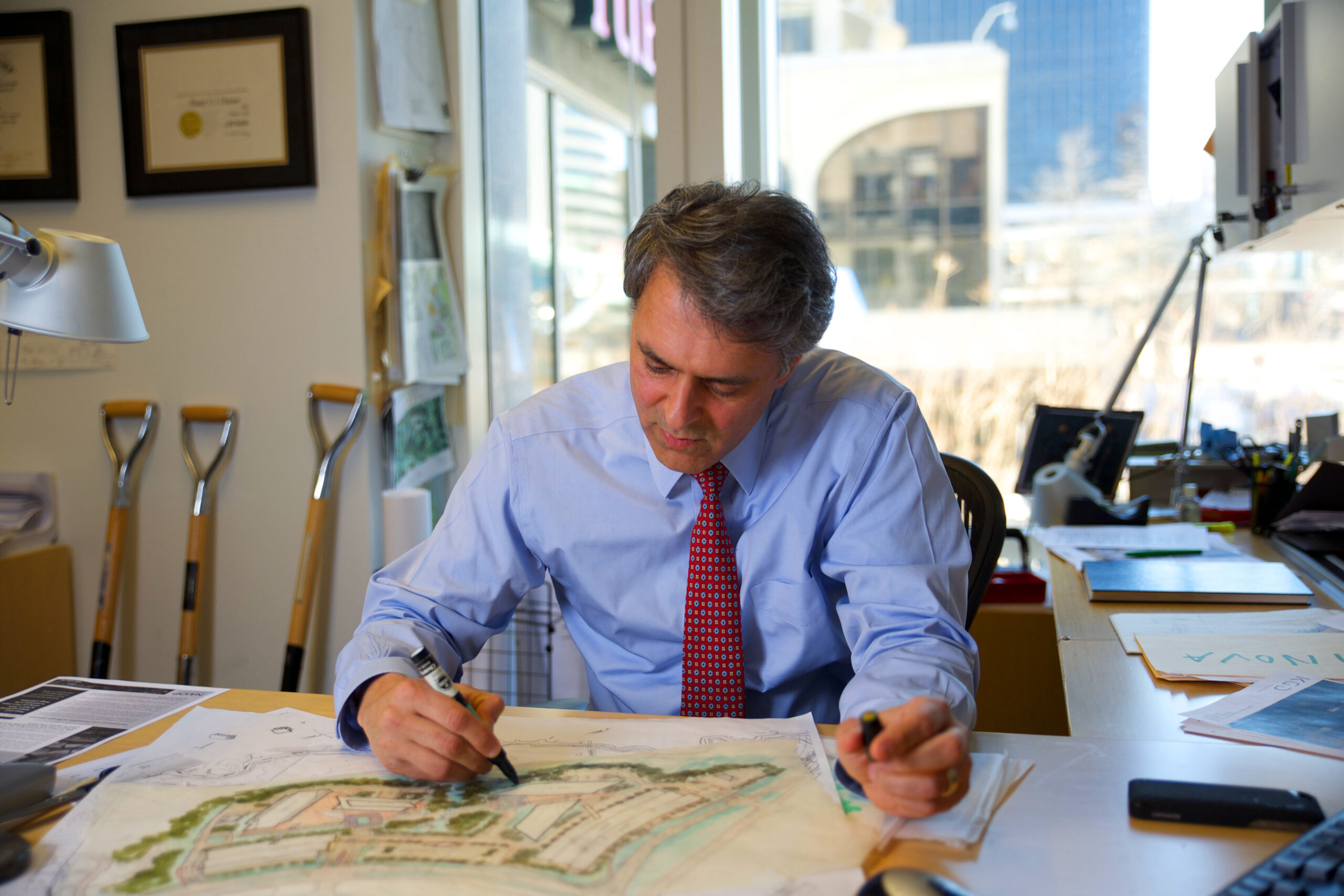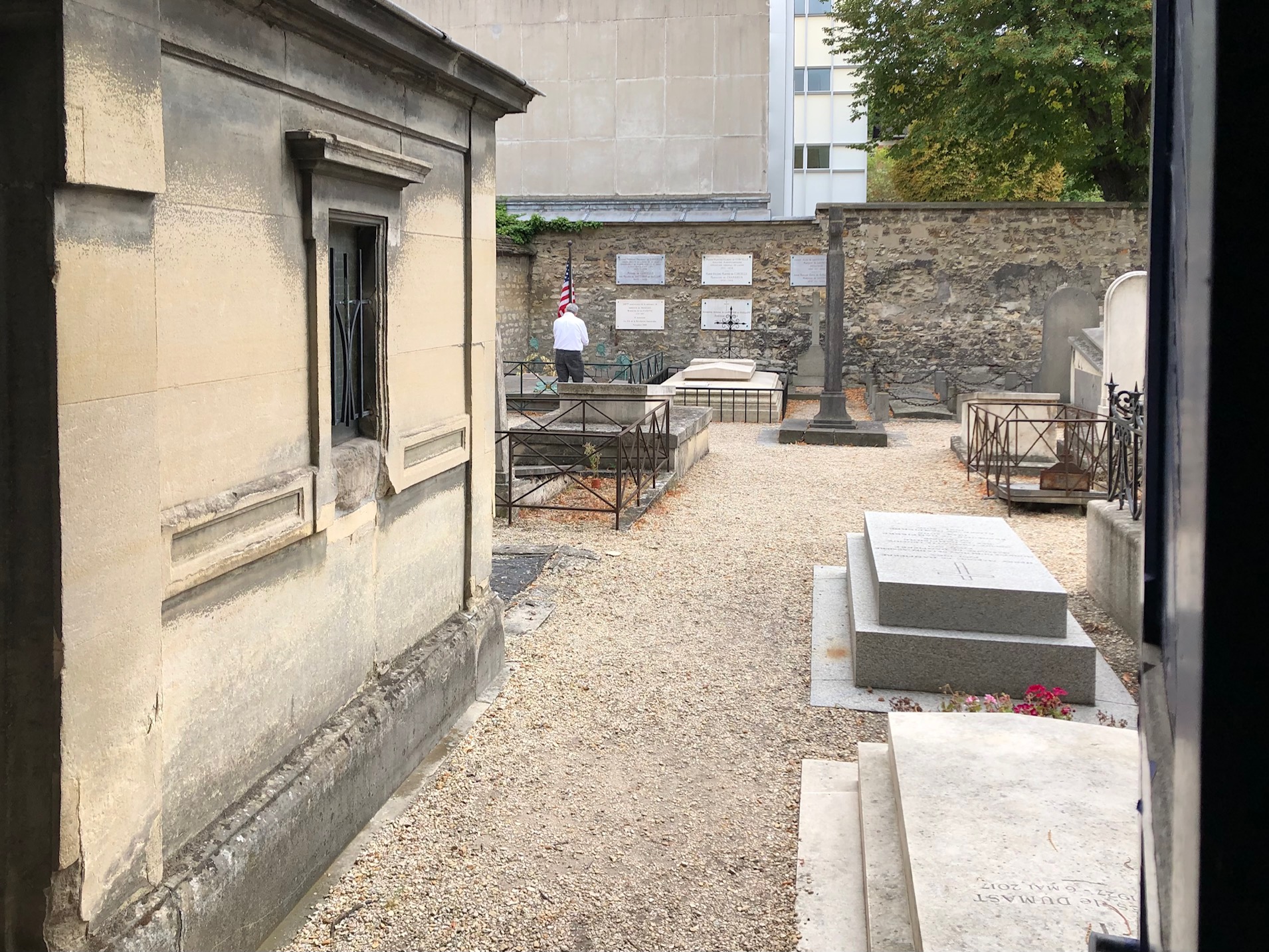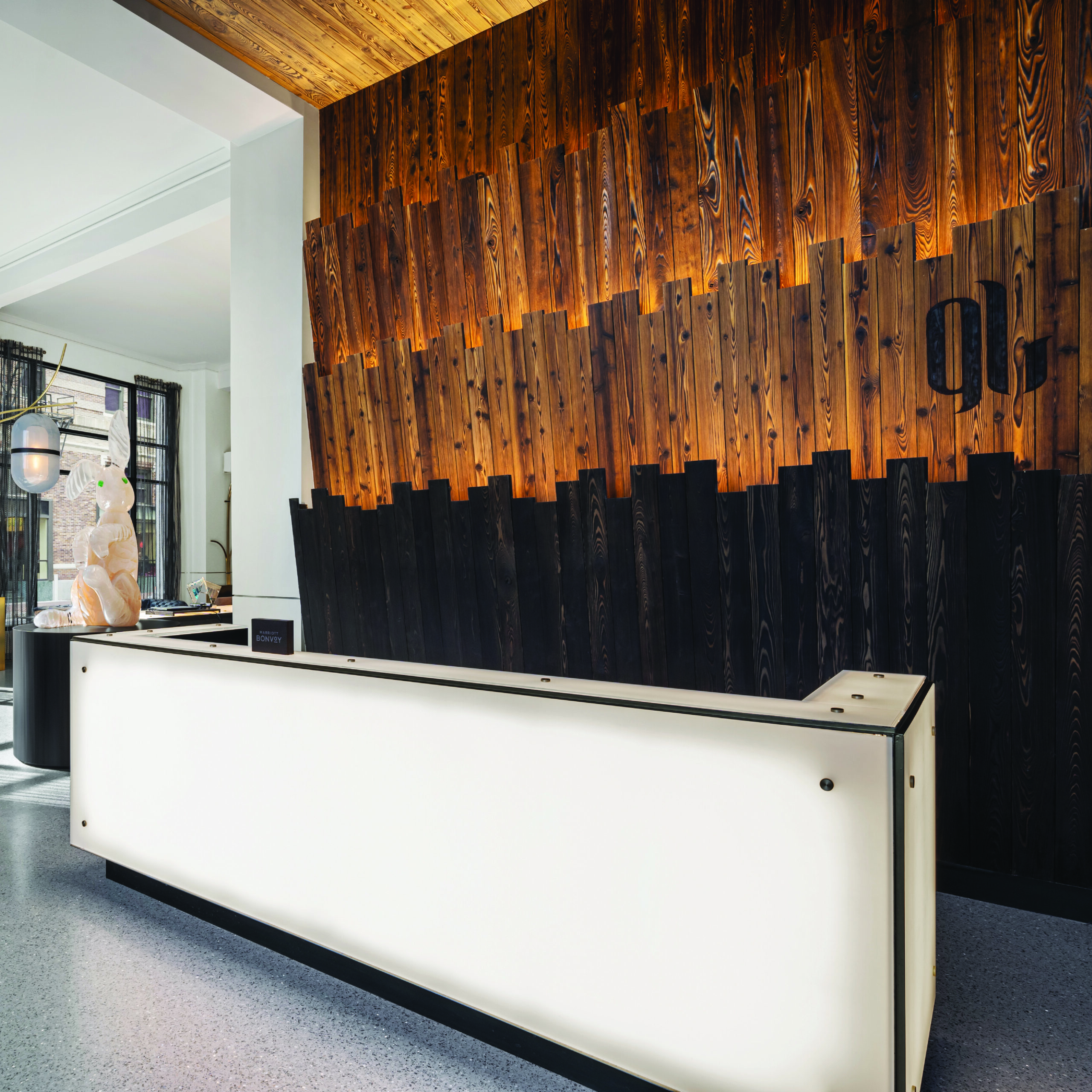In early November, AIA Virginia partnered with the Hanbury Community Design Lab to leverage the opportunity of having hundreds of visiting designers in Richmond for its annual Architecture Exchange East conference by hosting a design charrette to reimagine a site within the Broad Street Arts District.
More »Manoj Dalaya: Balancing Design and Practice
Manoj Dalaya, FAIA, founding principal and co-President of KGD Architecture, with offices in Washington, D.C., Arlington, Bangkok, and Boston, talks a lot about the concept of balance as the basis of good design and forging a design-based architectural practice. Dalaya, the 2021 President of AIA Northern Virginia, received AIA Virginia’s Award for Distinguished Achievement in 2018 in part because of his leadership in balancing the requirements of clients seeking security in their office buildings as well as healthy, open, and light-infused spaces for their employees. “It’s an interesting question — balance,” he says, “and if you go back to look at the role of the architect, it’s always to keep things in balance from the first conversation to the last punch list item.”
More »Finding a New Commonwealth
On Nov. 30, 2022, French President Emmanuel Macron attended a remembrance ceremony at the Tomb of the Unknown Soldier at Arlington National Cemetery less than three weeks after Armistice Day and 104 years after the cease fire marking 40 million military and civilian deaths during World War I. The tomb behind the old Custis-Lee Mansion overlooking the cemetery holds the remains of four soldiers interred separately after highly choreographed selections over the last 10 decades, representing 19 candidates from both World Wars, Korea, and Vietnam, 17 of which were exhumed from French soil or passed through France on their way to final resting place in Virginia.
More »80 M Street Leads the Mass Timber Revolution
Lauren Wingo, a senior structural engineer with Arup based in their Washington, D.C. office, discusses her work on the renovation of 80 M Street SE — three floors designed by Hickok Cole constructed with cross-laminated timber (CLT) totaling nearly 108,000 square-feet of commercial office and conference space atop an existing seven-story office building. CLT is part of a family of engineered wood products known as mass timber that are far stronger than traditional lumber and used to span distances normally reserved for steel beams. The project is the first of its kind in Washington D.C. to feature a vertical extension constructed using mass timber and the first high-rise overbuild timber structure in North America.
More »In the Market for Adaptive Reuse
Between the University of Virginia’s leafy main campus and downtown Charlottesville’s picture book pedestrian mall, the 10th and Page neighborhood has become a living case study for nearly 25 years in post-urban renewal revitalization. After the destruction of the predominantly African-American neighborhood Vinegar Hill in the 1960s, many of its residents reestablished themselves in and around 10th and Page, which has been a stronghold of Black homeownership and generational wealth for more than a century.
More »CNCPT: How We’ve Structured Practice Technology to Maximize Innovation, Creativity, and Efficiency
Technology has dramatically changed how we work at Clark Nexsen, enhancing our ability to develop innovative and creative solutions across the company. New tools and technology, from drones to energy and daylight simulations, have impacted what and how we design and deliver projects to our clients. To effectively capitalize on how technology can augment our work, we created a comprehensive resource and strategic hub for practice technology within our firm that meets key goals: supporting our people with the technologies they use frequently, maximizing the potential benefit of those technologies, improving workflows and processes, and investigating and applying emerging technologies in our industry. Known as CNCPT (Clark Nexsen Creative Practice Technology), and pronounced “concept,” the central purpose of this collaborative is to apply advanced digital tools across our interdisciplinary practice to improve the quality and efficiency of our work, help clients make informed decisions, and remain at the forefront of technological innovation.
More »Building the Future by Preserving the Past: The Glass Light Hotel & Gallery
Designed in 1911 and built in 1912, the historic Royster Building was originally constructed as the headquarters for the F.S. Royster Fertilizer Company. The 15-story Classical-Revival structure was predominantly used as an office building, and most recently served as the headquarters for the Norfolk Redevelopment and Housing Authority until its reimagining as an intellectually curious boutique hotel — Glass Light Hotel & Gallery. The adjacent building was built in 1900 and was used for many purposes, including a department store, movie theatre, and, most recently, offices for the City of Norfolk. It now eloquently displays rotating exhibits of exquisite glass art from local and internationally renowned artists.
More »




